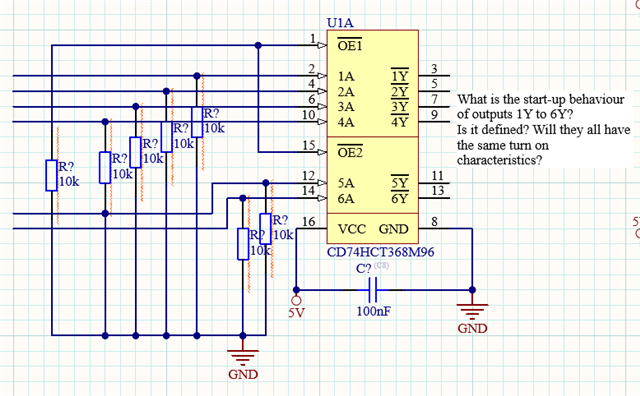Hi Team,
Can you please help us with our customer's inquiry below.
I'd like to know how the outputs start up at power on with the following configuration. It's important to us as we have relay connected at the outputs and if the outputs do not behave predictably, there's the possibility that a short circuit might be created, even if just for a short time, we try to avoid this.

I am trying to figure out whether it's good enough to constantly enable the driver via pull down or if I need some kind power on reset circuit.
We want to constantly enable, unless it's necessary to make it more complicated because of start-up undefined states.
I understand from the E2E thread below that the output of flip-flops, latches and registers are unknown on power up. However, is the output for buffers like CD74HCT368 is also unknown on power up?
e2e.ti.com/.../faq-what-is-the-default-output-of-a-latched-device-flip-flop-latch-register
Regards,
Danilo

